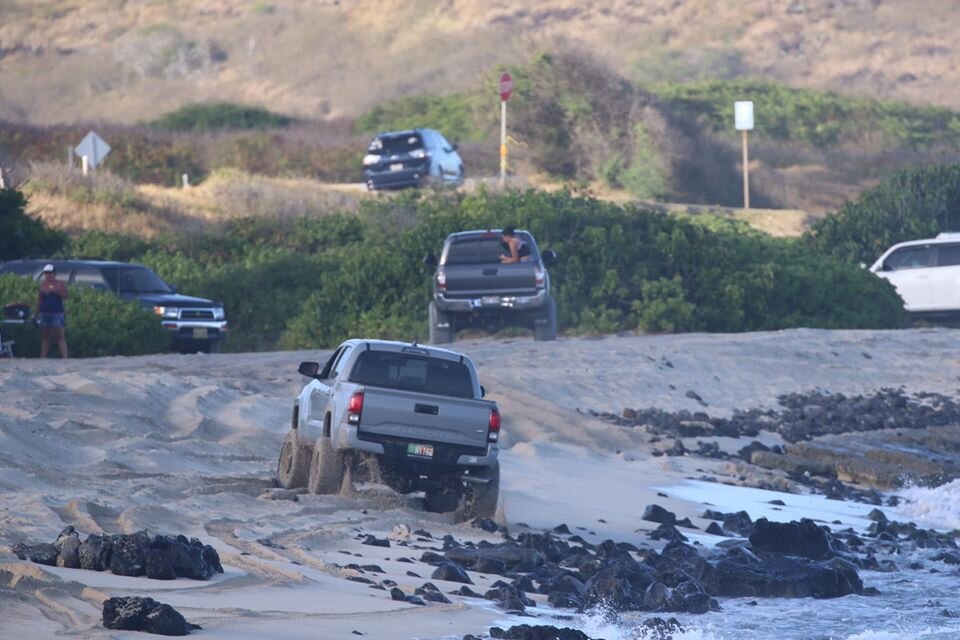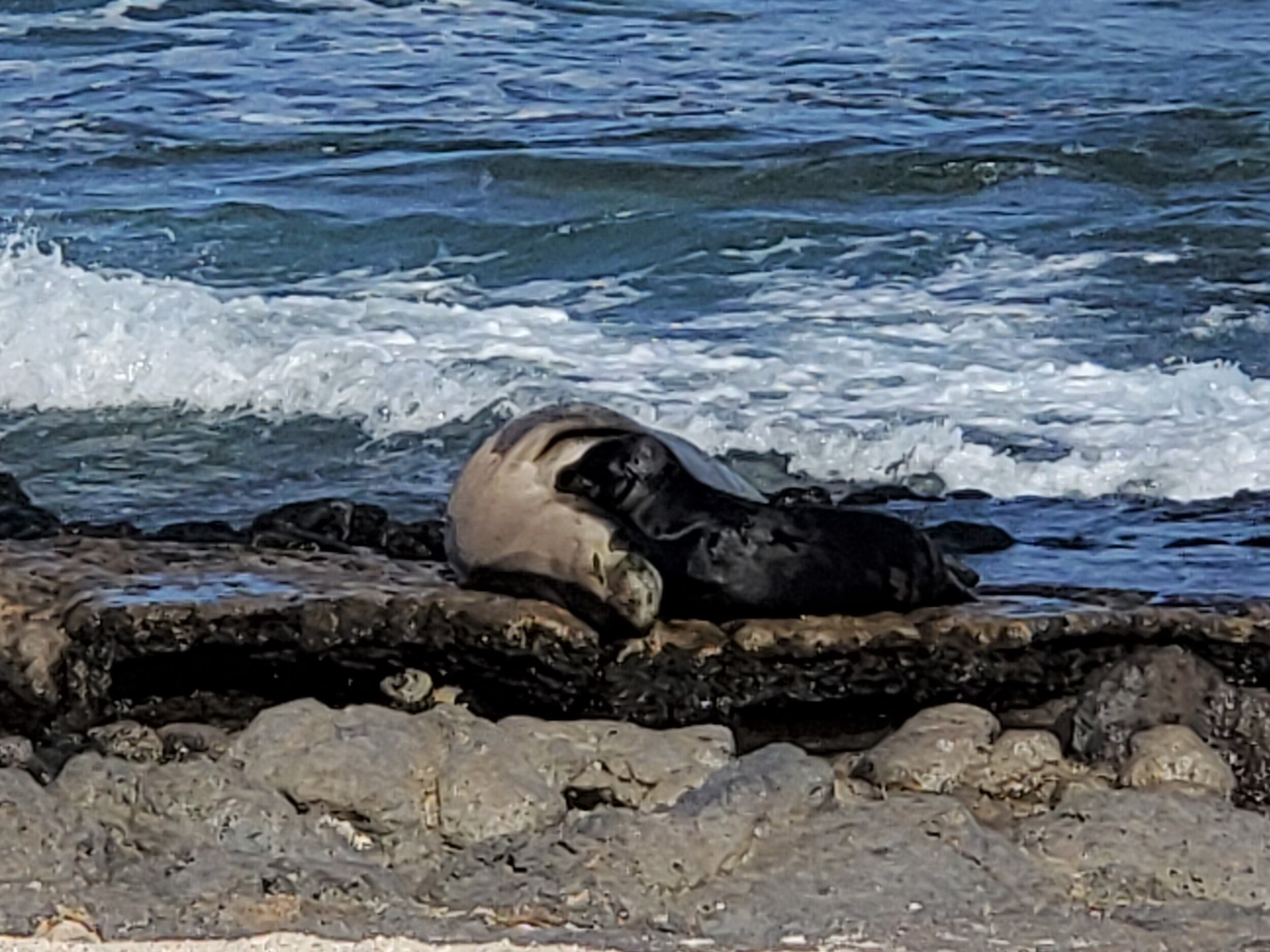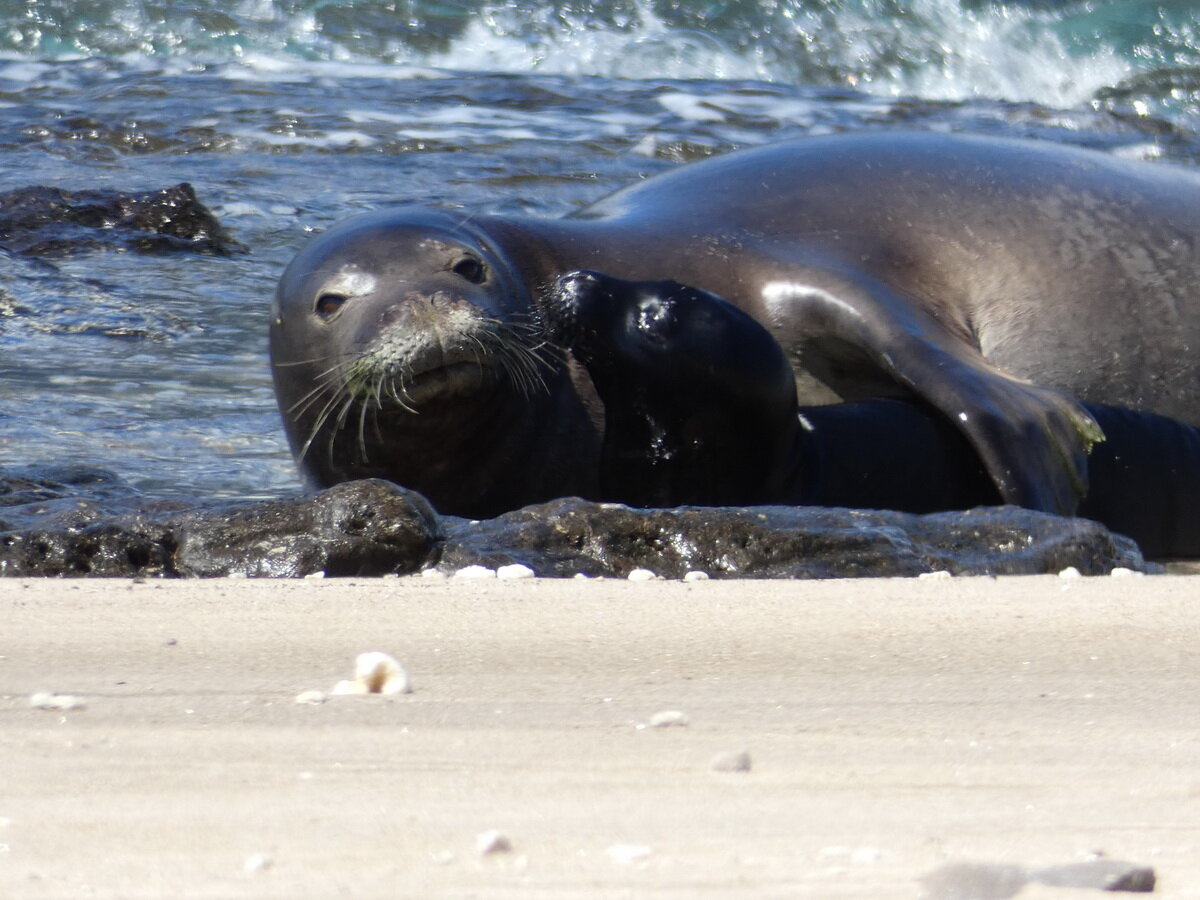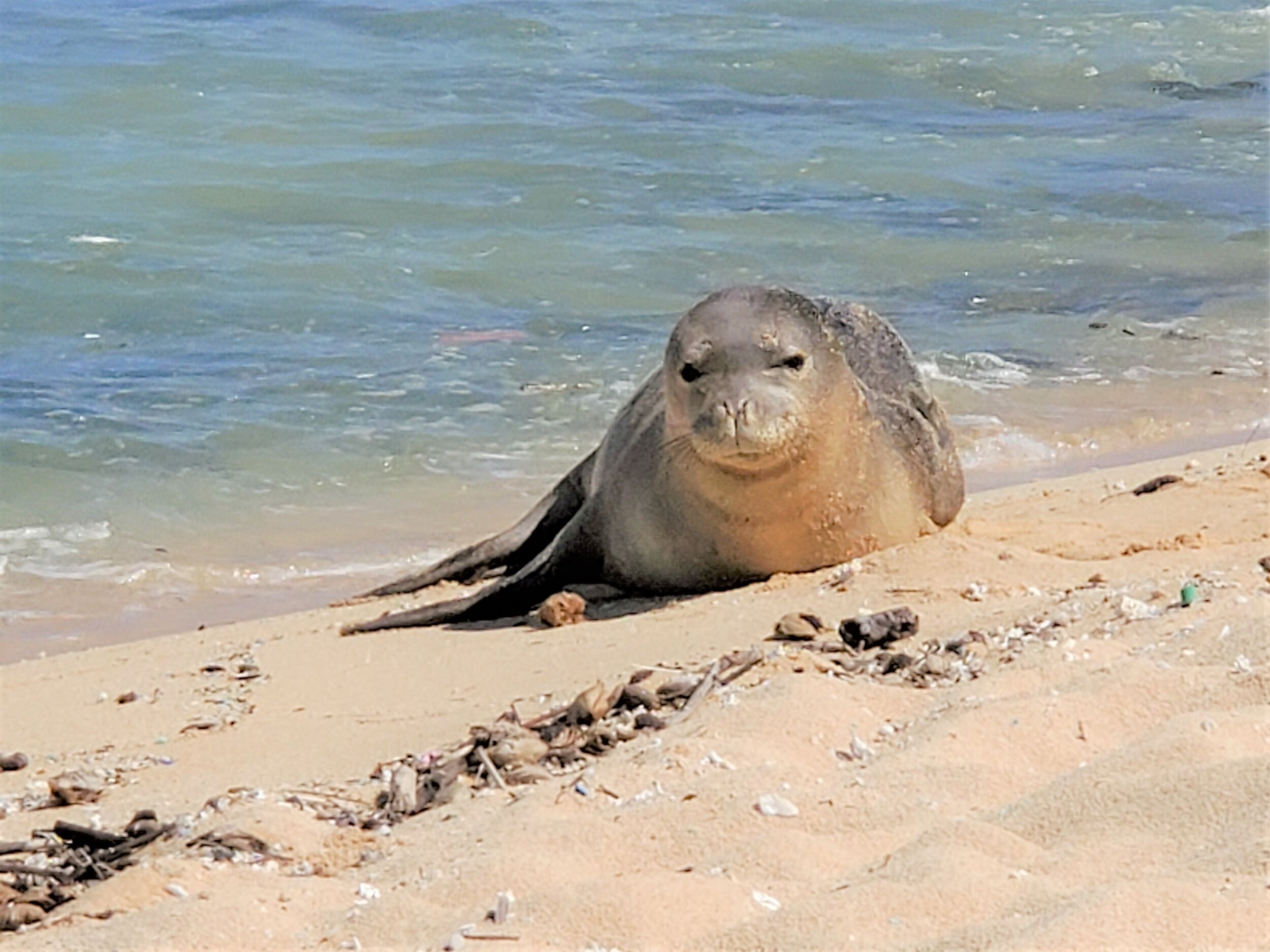Most newborn pups of 2020 are weaned by their mama and pups are doing great on their own.
Nohea, PO2 (N2) — Kaiwi, RK96/97 3rd pup
Ikaika, PO4 — RL42’s 2nd pup Photo by Joyce 06062020
And even more, Oahu had 5th pup, PO5 was born the earlier this month on Manana (Rabbit) Island. Mama is nursing PO5 right now.
HMAR volunteers and supporters are keeping eyes on these two pups, PO2 and PO4 on the Oahu’s coastlines all day long.
Recently I was hearing so many stories about ATV cars run on the beaches where the pup is learning its life by themselves. Not only Oahu, but the Island of Hawaii is also telling the stories about the same problems.
This beach is one of Hawaiian Monk Seal habitats on Oahu. Photo by Kimo Smith
Any beaches on the Hawaiian Islands, you are not allowed to run cars on the beach and coastlines. It is illegal!
Pups are sleeping on the beaches even they don’t know some dangerous things are happening right next to them. If you harm any Hawaiian Monk Seals you will be fined because it is illegal to harm or scared them.
Hawaiian ancestors taught us that we have to good take care of the land and the ocean. Malama `Aina and Malama Kai.
If we are good take care of our land and ocean, the land and ocean take care of us, food to eat, water to drink, and safe place to live. But if we spent up quickly the resources we will not have a future or next generation will not have beautiful land and ocean.
Ua Mau ke Ea o ka `Aina i ka Pono
This is the motto of the state of Hawaii. It is most commonly translated as The life of the land is perpetuated in righteousness.
Please respect all creatures in the world! We, human is just caretakers who meant to take care of all wildlife and beautiful natures.
Mahalo for visiting my blog!
If you are interested to learn about Hawaiian Monk Seal please let me know. I would love you to have one of our tours including a Virtual online class.



































